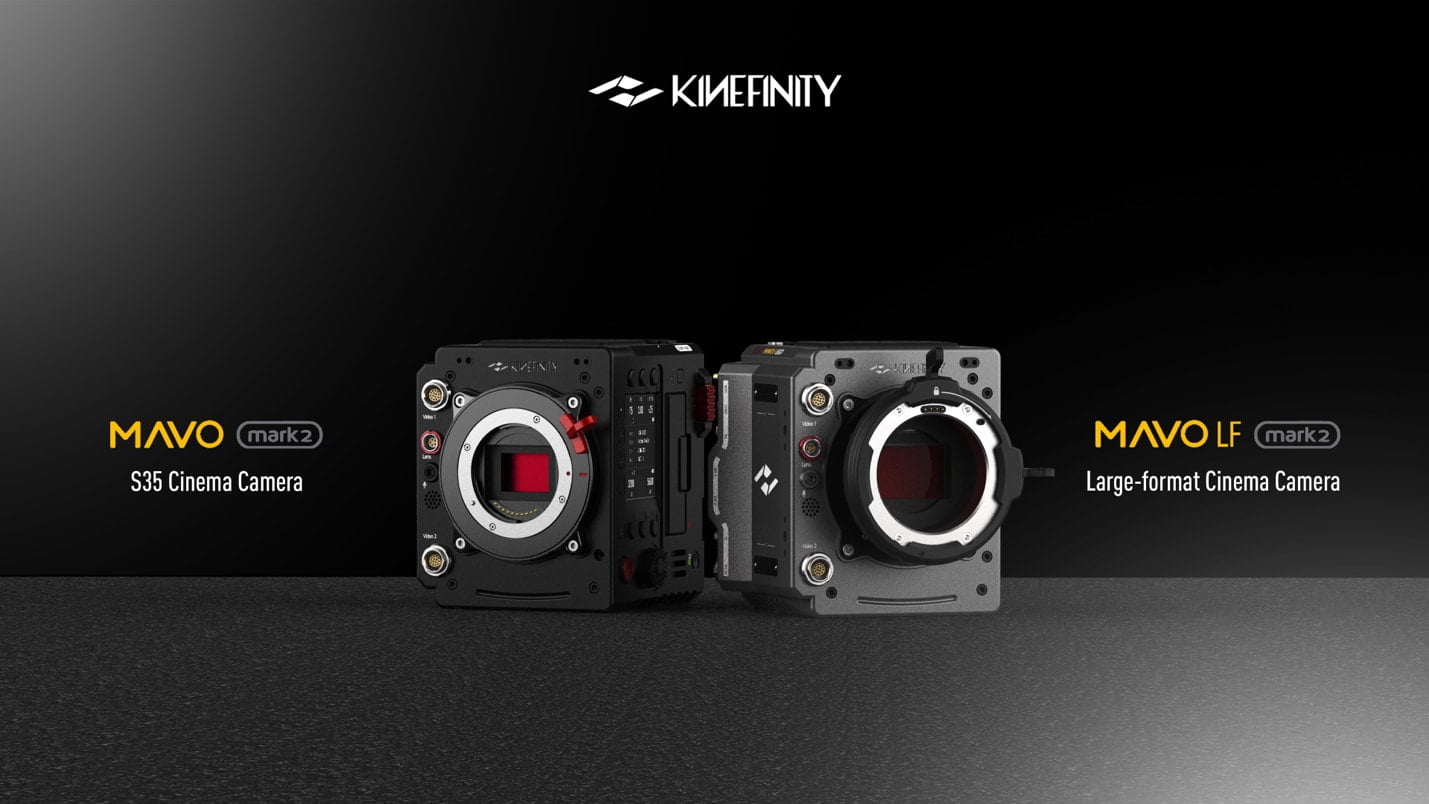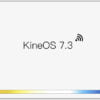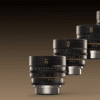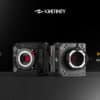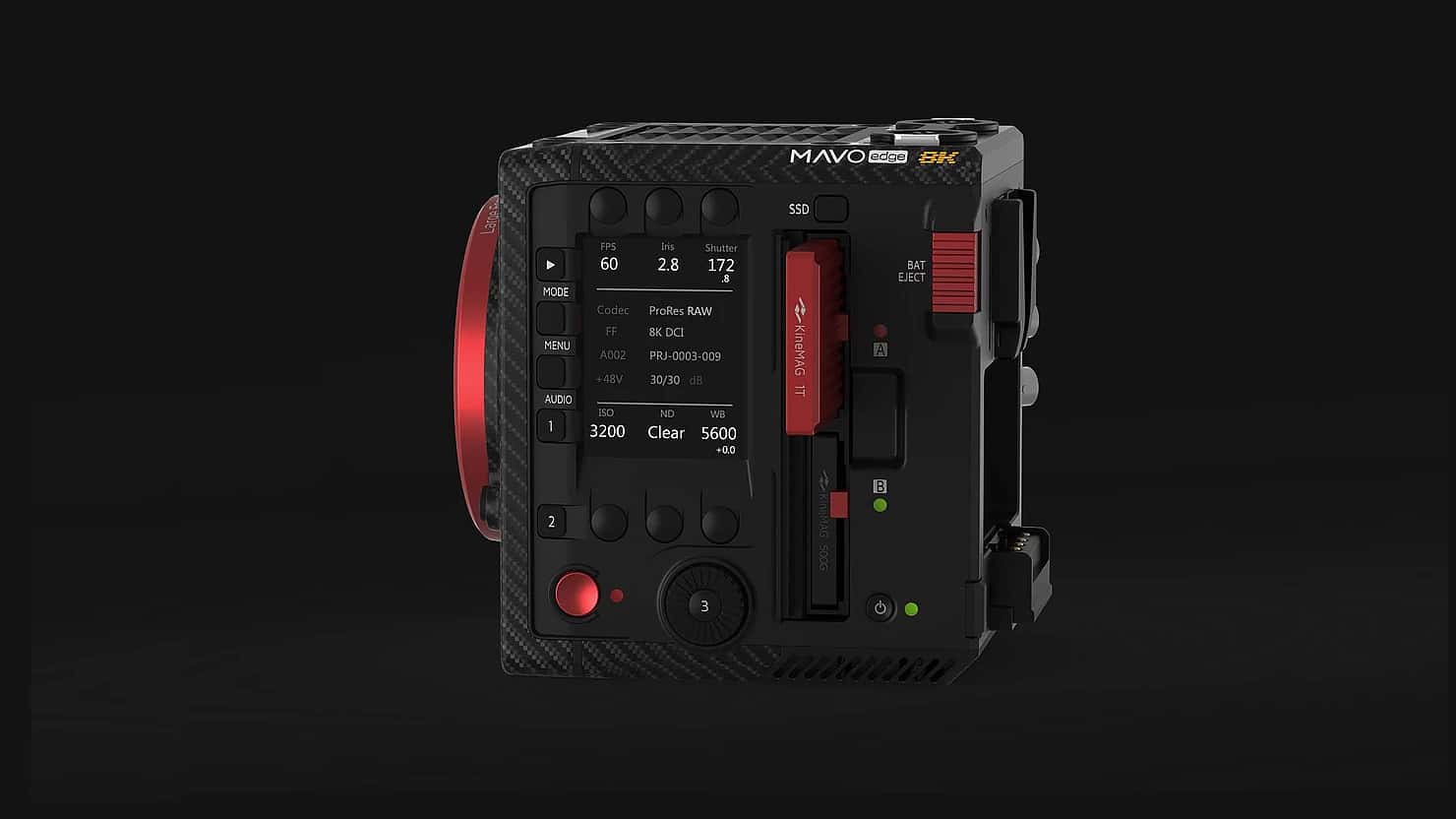Today the new Kinefinity MAVO S35 mark 2 and Kinefinity MAVO LF mark 2 were released!
In the 10 years of Kinefinity’s existence Kinefinity Inc. previously released 9 cameras
- Kineraw s35 (2012)
- Kinemini
- Kinemax
- Terra 6K
- Terra 4K
- MAVO LF
- MAVO S35
- MAVO Edge 8K
- MAVO Edge 6K (2022)

The Mavo Edge 8/6K cameras are still in production and today Kinefinity adds two new cameras to their existing line-up. The new cameras are the Kinefinity MAVO LF mark2 and the Kinefinity MAVO S35 mark2 . These two new camera’s will already ship the beginning of march 2023!
Even though these new cameras are very powerful they lack a few features compared to the Edge cameras and they come at a much lower price point than the Edge cameras which will remain the Flagship models with this new release. Since the Kinefinity MAVO S35 mark2 involves a new sensor design not used in a Kinefinity camera before and the MAVO LF mark 2 features a sensor design we’ve seen appear in the MAVO Edge 6K And MAVO LF we will focus in this article on the Kinefinity MAVO S35 mark2 and it’s inherent unique sensor design and the history that comes with it.
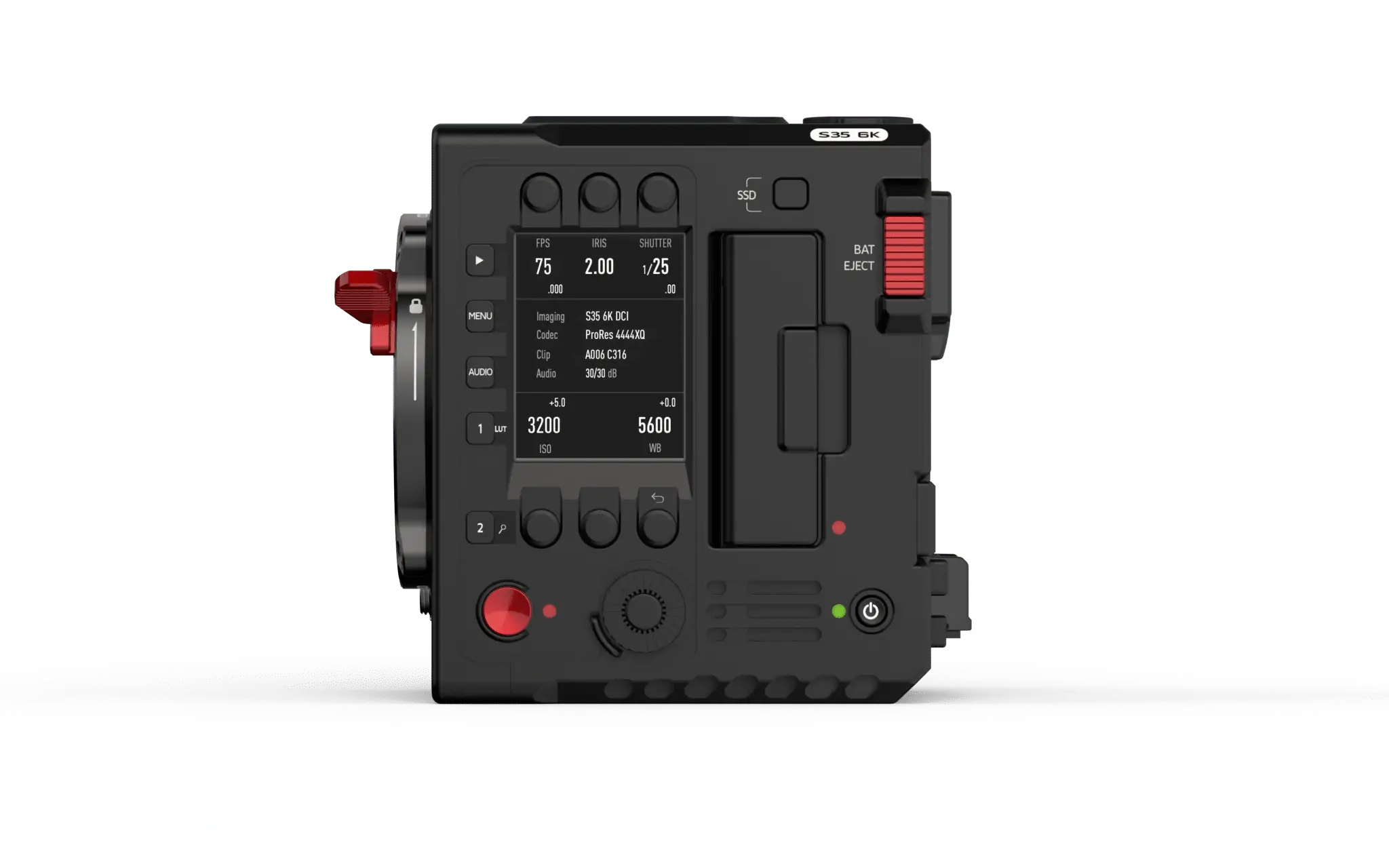
Kinefinity MAVO S35 & MAVO LF
When Kinefinity released both the MAVOs35 (mark1) and the MAVO LF (mark1) back in 2018 the MAVO LF became much more popular than it’s smaller brother MAVOs35 . The dual native ISO which gave the MAVO LF good and clean results at 5120 didn’t compared to the MAVOs35 which fell apart when pushing it over 800 iso gain, promoting the MAVO LF as the lowlight king.
Another huge reason for the popularity of the MAVO LF had to do with being the first affordable Cinema minded camera with a large format sensor. Before the release of this camera only the ARRI Alexa 65 and hybrid dslrs existed. The MAVO LF featured many crop modes like S35, MFT and S16, but also featured the ability to adapt to almost any lens in the world due to it’s flexible short flange Kinemount, and with the Kineback-W extension one was able to output SDI and Timecode and have Full size Phantom powered XLR inputs for on board audio recording. What all Kinefinity cameras share in common is a 1.5 aspect sensor, ideal for anamorphic shooting, with the LF camera there was no exception making this the ideal camera for Large Format Anamorphic cinematography. The inbuild desqueeze modes and resolution settings are suitable for even the most exotic Anamorphic lenses and aspect ratio’s.

The Kinemount which we already saw on Kinefinitie’s first camera the Kineraw s35 is a great way to adapt many lens mounts with a positive lock to ensure wiggle free movement and to handle big torque from bigger and longer lenses. PL mounts, EF mounts and even e-mounts were part of the lens mount product range, and due to the short flange distance of the e-mount about any lens or lens adapter could be adapted to Kinefinity cameras. A big crowd started to experiment with medium format focal reducers on their MAVO LF and Mamiya medium format lenses, and this camera opened up to a whole new level of creativity.
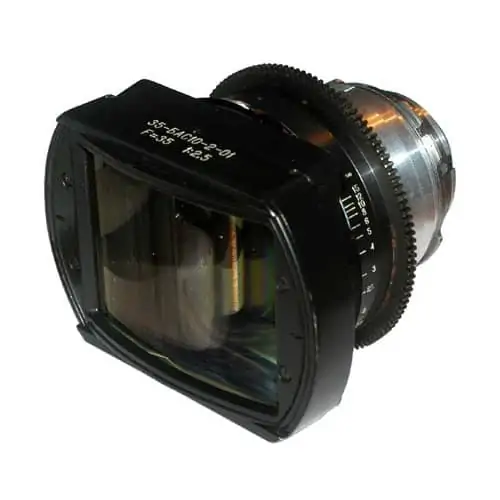
S35
Even though Large Format cameras deserve their place, and it’s super cool to use exotic lens designs and deploy their full image circle, including Medium Format lenses with Focal reducers, our heart is still with S35 for aesthetic and technical reasons. Obviously with dedicated crop formats on Large format camera’s one can still crop to S35 but since the Olpf and other parts of the image chain are dedicated to it’s native format it’s best to choose the format you intend to shoot on regulary. For us there are roughly 4 reasons why S35 is an amazing ‘ here to stay’ format.
- S35 seems to be the sweet spot for lens designers
- The most iconic cine lenses only cover S35
- Many Photo lenses (135 aka full frame) works technically better on S35 than LF
- S35 from a sensor design and camera design perspective is a great ‘ compromise’
lens design
Imagine a camera including it’s lens as a scalable object. Let’s start with a S8 camera. Its hard to make a s8 sized sensor , the tiny pixels which will have difficulties to capture enough light and also will suffer from noise. Making the photosites bigger will result in a low resolution capture. The benefit of such small scale sensor design is super small lens designs, because these lenses only have to output a tiny image circle. Once we start to scale up the sensor to s16, and after that S35 the lenses when they follow similar optical design rules have to be scaled up as well, they will become more weighty, costly and foremost bigger. One can migrate to different design philosophies, and compromise on edge quality like mtf and illumination, but it’s a compromise. From a lens designer perspective it’s relatively easy to make lenses with fast T stops for the S35 format, but when the lenses require a larger image circle, the lenses become too big for most camera operators, and too expensive. The only beneficial part of scaling up sensor designs, is the ability to make pixels bigger relative to a high resolution capture and thus make cameras with higher sensitivity and less noise. The compromise between hard to make small optics, and very big optics (like signature primes etc), seems to find it’s perfect balance around the S35 format. With the new ALEXA35 we see that high resolution capture and high quality capture with a S35 camera is possible, and the ALEXA35 is the new benchmark.

Iconic S35 lenses
An amazing amount of well matched lens series exist for the S35 format, including Panavision lenses, Bausch & lomb Cooke lenses, LOMO, Zeiss/Arri Lenses like Ultra Primes, Master Primes, B speeds, standard speeds and Angenieux zooms and many other amazing lenses which were used to create cinema history. S35 was always the benchmark with only a few other films produced in other formats like 65mm, or s16. It’s only a trend of the last 5 years, that cinema lens designers release Large format lenses in big numbers, and that people start to rehouse photoglass in cinemahousings to meet the requirements of on film set use. These lenses except longer focal lengths which tend to throw out bigger image circles do most often not cover sensors larger than Academy format, and the more recent lenses like Ultra primes, Cooke s4 not bigger (officially), than S35, so using these lenses on larger format cameras will often lead to vignetting, or soft corners and other technically unwanted side effects.
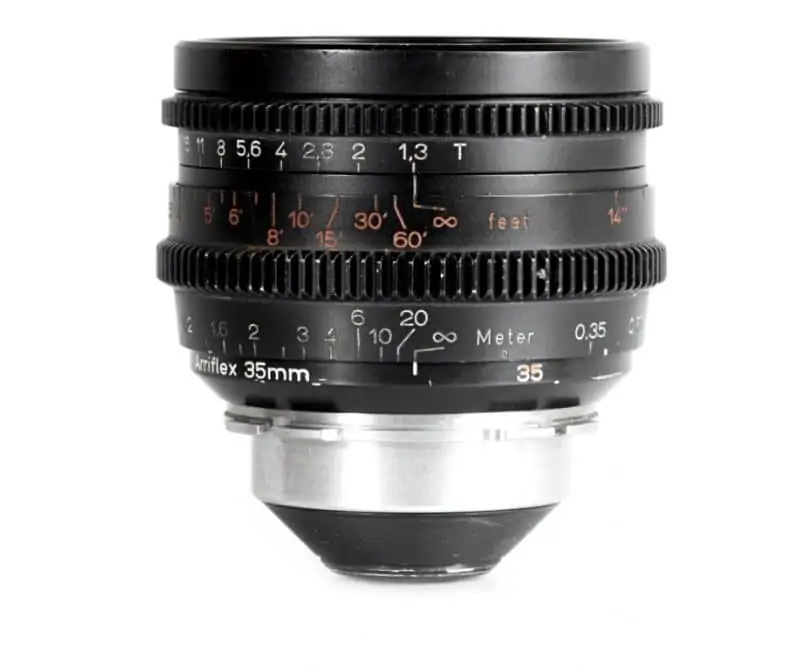
Since the existing s35 lenses are so beautiful and so well throughout and well matched (within a set) they are still workhorses on many filmsets, and now with the re-release of the S35 format with high resolution capture of the ALEXA35 we will see a lot of cinematographers migrate back from the Large Format trend back to S35. Large Format in our eyes is mostly a temporary way to meet the demands of high resolution capture, but was never invented as an aesthetic format. Even though marketing people will tell you B****T like Large format is more immersive, it was mainly always an Sensor issue not an aesthetic issue we tried to solve. Making a fast T stop lens for Large format requires a lot bigger and more expensive and more heavy glass compared to S35, and thus the shallow of depth rule insisting that smaller depth of view can be easier met with Large Format cameras and Large format lenses can go straight to the dustbin. If one can make a 50mm T2.0 lens for Large Format, one can take the same concept and make it T1.4 for s35, and thus the differences in viewing angle (relative focal length) are diminished.
Photoglass that works better on S35
Most Photoglass was designed to cover 8 perforation 35mm film (36X24mm) which was the smaller brother of medium format and large format photography. Due to introduction of Olympus pen which used a ‘ half frame’ a few decades later Canon introduced a digital camera called the Canon 5d and called it Full frame, that marketing led to the widely highly problematic FULL FRAME terminology, which even leaked through to cinematography. It’s even more funny camera brands like SONY start to call their camera FX6 Full frame while it measures only 0.6mm taller than S35 open gate.
Back to 135 photo glass (AKA Full Frame), which intends to cover a 36X24mm frame. The target of these cameras was that they were small, and handy. And as we have stated before it’s hard to make a lens for Larger formats which meets the same technical specifications as a relative focal length for smaller formats, and when going too small, other issues are introduced and the Balance seems to be met around S35. With these small 135 lenses vignetting and edge fall off, aberrations and low MTF at wide f stops was normal, and even though we started to appreciate these defects, most of these are technically inferior to cine lenses. But wait! Many amazing lenses in tiny small formats like the ZUIKO OM f2.0 lenses are created, and when projected on a lens projector we can easily see that they perform technically better on slightly smaller formats like S35.

Even though some people are obsessed with maxing out their image circles of their lenses, we do believe that these lenses perform amazingly on smaller sensors. Yes there is something about lens defects, etc and we see it a lot in contemporary large format commercial films, but in our believes this is just a temporary trend. The only issue of Stills lenses on S35 is that sometimes it’s hard to find solutions for the wider end. With most lenses 18-20mm is the widest you can find which is for some people not wide enough. There are numerous solutions, like adding focal reducers, or find other lenses to complete a set that can go wider. For us it’s an eye opener to forget image circles but to study lenses on lens projectors. Another thing with a lot of stills lenses is the non telecentric designs, causing wider lenses to smear on the edges due to inclined rays in refracted glass, mainly due to OLPF filters which are needed to avoid aliasing in the Digital capture. By executing only the center of the Image circle these issues are mitigated.
S35 sensor design
S35 sensors are relatively small, require less power, and can be made in one piece compared to Larger formats. Some might not know this but the maximum format to produce a sensor in natively without stitching is S35. If you want to go bigger you have to stitch sensors together, there is no factory in the world that can produce sensors larger than S35 in their native mask. Stitching sensors can lead to weird artefacts like we recently saw on the RED V-raptor, which according to it’s user base can have defined lines on the image where the sensor was stitched. Obviously companies like ARRI have shown that stitching can be done very well, and also on the MAVO LF/edge 6k/edge8k we have never seen a stitching artefact
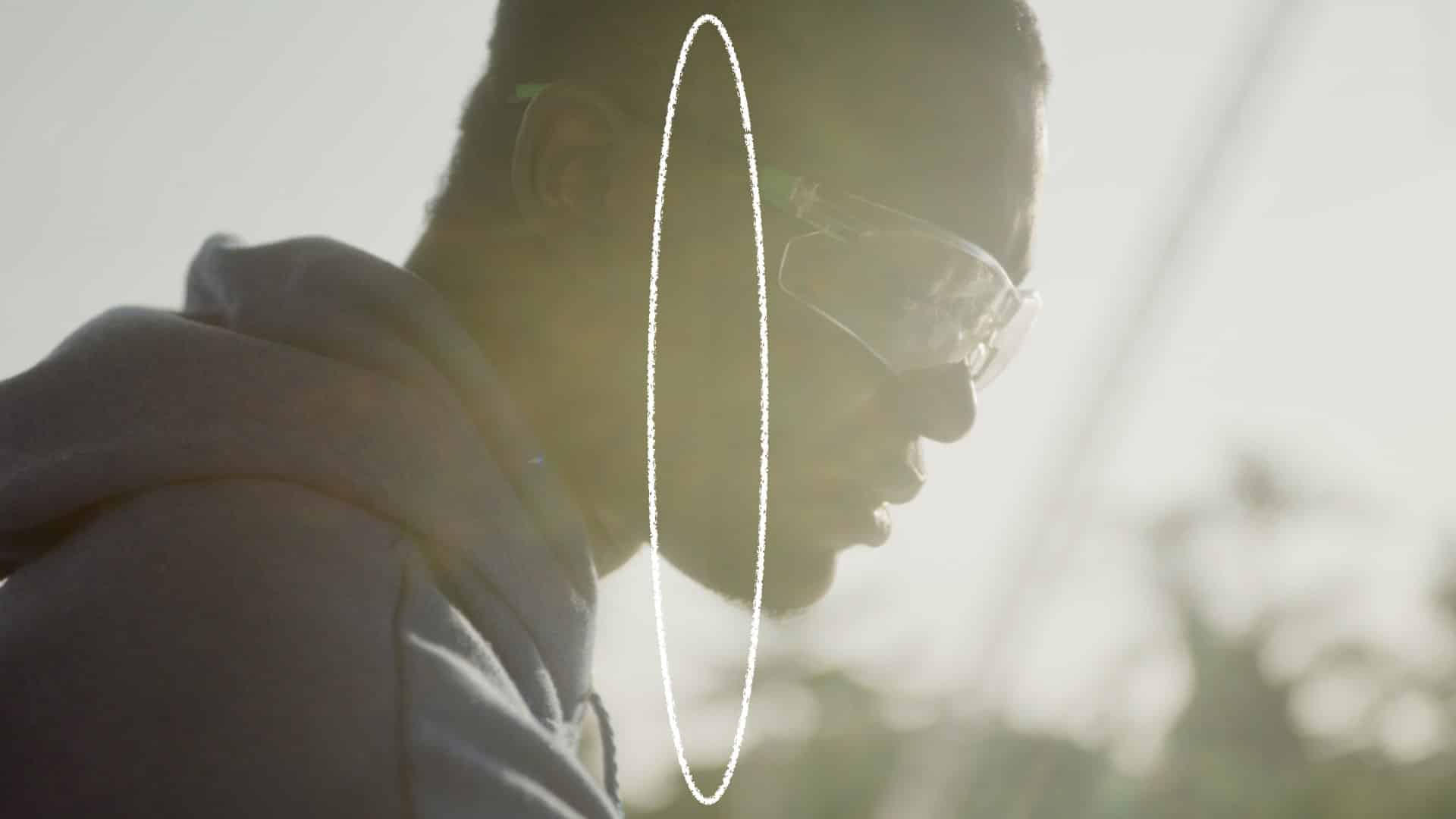
A larger sensor dictates a larger body shell and it seems Cinema is moving towards smaller body designs. As we have issued before a Larger sensor sites can gather more light and thus produce less noise, but sensor design has become that good that it becomes more easy to produce S35 sensors with small photosites like the Fujifilm Xh2s with very good specs. And last but not least it’s generally more cost effective to create a smaller sensor compared to large format sensors.
Kinefinity MAVO S35 mark2
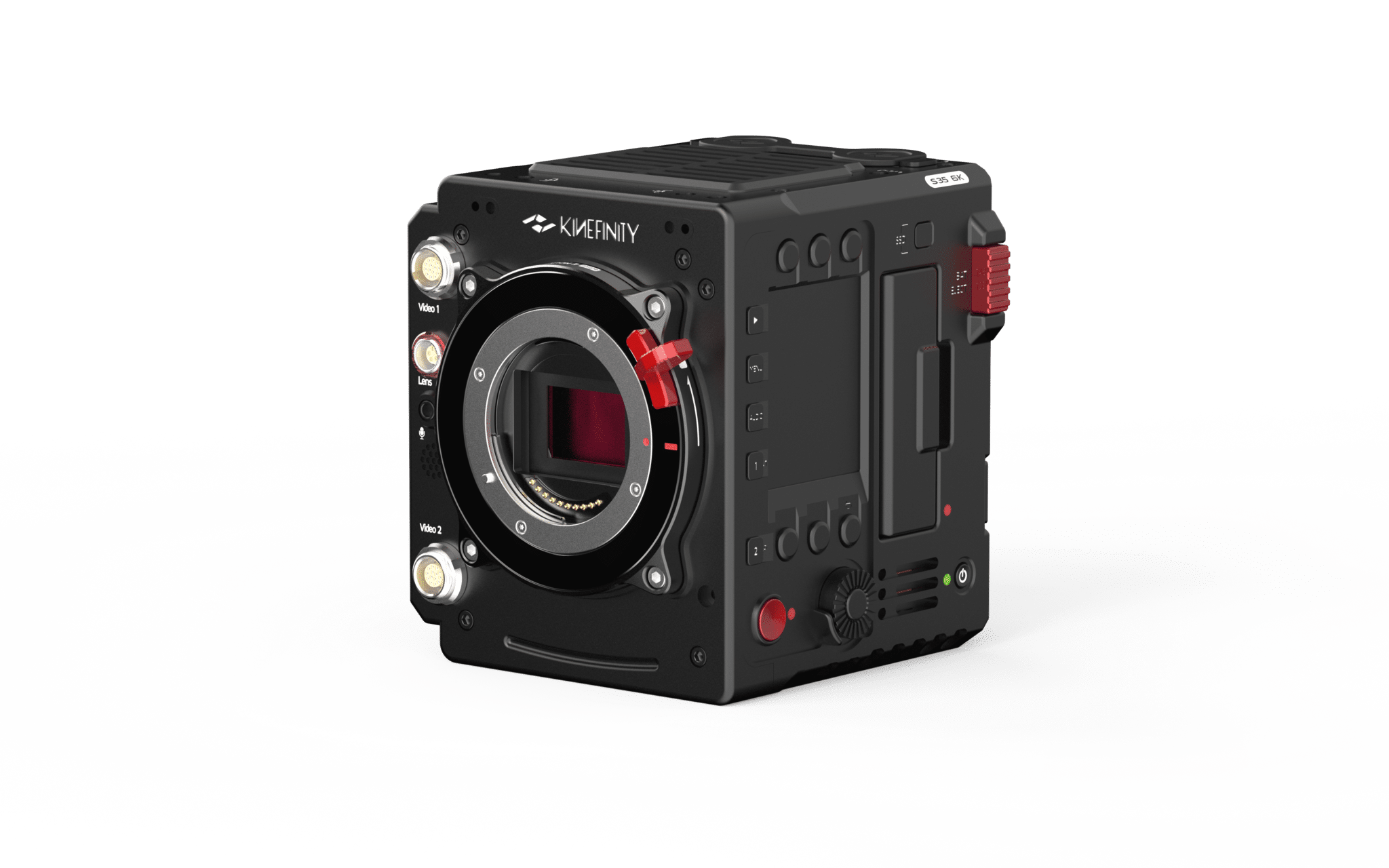
Kinefinity has found a new sensor that has much better ISO capabilities, CFA design and readout times as the previous MAVOS35. Kinefinity released the Edge cameras which gave better processing power better button layout, and more features without having to add extra devices like the discontinued Kineback compared to the MAVO LF and the MAVO S35. Kinefinity also released their blazing fast recording media Kinemag NANO both available as empty enclosure to put your own media in as with their own read only super safe M2 media. The Edge cameras also have a dual image processor, so you can simultanousely output a different Lut on your Kinefinity Viewfinder as on your Directors monitor connected to the Sdi.
Kinefinity took all the things they liked from the Edge and even slimmed down the camera slightly in lenght, they took away the E-nd stage and one card slot to make the camera more budget friendly* and smashed a new S35 sensor inside the body and the Kinefinity MAVO S35 mark2 was born!
*the camera also lacks a Ethernet port so is not compliant with OPEN API Networking
New native camera mounts
The MAVO mark 2 cameras also bring innovations. Even thought the Kinemount with positive lock swappable lens mount has always been a success, there was an urge especially for Rental houses to have a Fixed mount. Another issues was the e-mount, hated and loved by many. Due to the Kinemount throttle and the e-mount sitting quite deep there wasn’t enough room for a good locking lever and in some cases with lenses with a wider barrel it wasn’t possible to lock the lens properly. To fix the demand of both rental houses and e-mount shooters, Kinefinity came up with three user swappable fixed mount types.
- Kinemount (which is a mount to adapt other Kinefinity lens mounts to
- Fixed PL mount (a rental friendly PL Mount)
- Fixed E-mount ( an active e-mount with no obstructing locking lever)
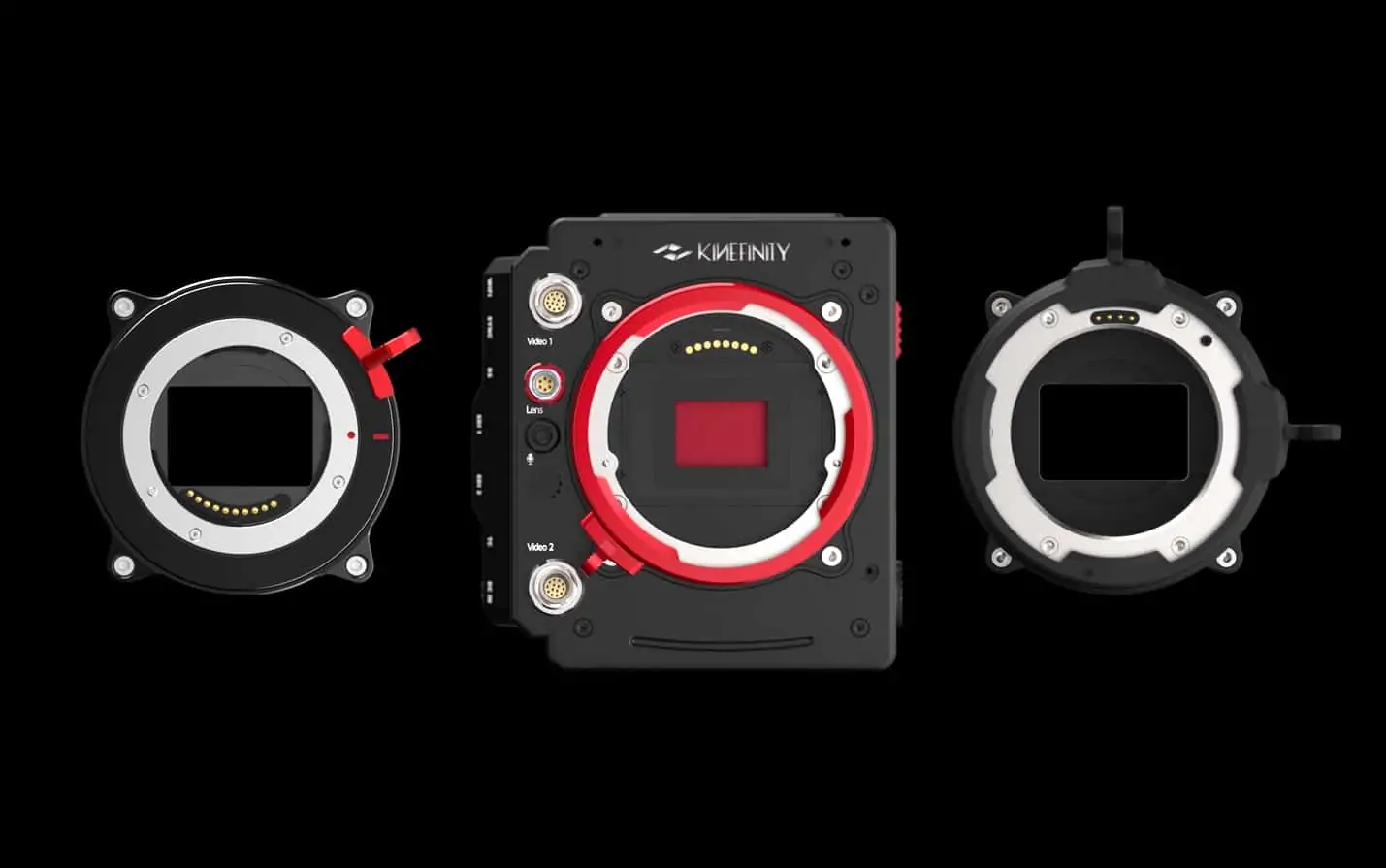
All these lens mount have in common that they are user swappable by means of 4 screws, one could go with the Kinemount and use all lens mounts Kinefinity has made and is making. If you need an active e-mount for electronic lenses (image stablisation and iris) or you simply need a E-mount with wider throttle for Lenses or adapter that do not work with the existing E-mount then go with the Fixed E-mount. If you are a rental house and 99% of the rentals are with PL mount, don’t bother with the kinemount system and the attached Pl mount but go with the native Fixed PL Mount which both supports ARRI LDS as Cooke i for lens metadata. Opposed to the default Kinemount in previous models you know have to choose which native mount you want to buy, as stated previously one can change these mounts real easily by means of 4 screws, and they are all shimmable. To sweeten the deal we include a free Fixed e-mount for every pre-order until the end of February!
Better CFA and BT2020 compliant
The MAVO S35 mark2 features a new sensor with OLPF and IR cut filter. and the CFA filters on the BAYER level of the camera are meant to have high spectral sensitivity. Kinefinity is working on harmonizing their colorspace to REC2020 (BT2020), and with the high spectral response of this sensors there will be very good seperation in color tones. All of the cameras that are in production will receive an update later this year* making them REC2020 compliant.
*all Edge and mark2 cameras should receive an Rec2020 fw update before Q3 this year.

The rec2020 colorspace is related to maximum human perceptual resolving power, and Rec2020 is a widely supported colorspace in programs like Davincy Resolve, Scratch, Baselight and Lustre.
Using the REC2020 standard doesn’t require custom color profiles making grading a breeze. A color space transform from Rec2020 to Rec709 is available in all known color grading software, and by using the REC2020 standard your camera is future proofed.

Dual Native ISO
Even though the MAVO Edge 6K and MAVO LF mark2 will remain the king of lowlight with a 2nd base native iso of 5120 ISO, the MAVO S35 mark 2 will be less than a stop difference, and we do believe from the sensor specs that it should be able to create stunning images at both 3200 iso and 800 ISO. Another easily overlooked feature of Kinefinity camera’s is the abilty to lower analogue ISO on the sensor circuitry. Most cameras including RED and ARRI only use digital amplification instead of analogue amplification. In Arri cameras this is called CINE EI, and in RED camera’s ISO. On the MAVO mark2 the user can select an analogue ISO of all the way down to 160 ISO, making the noise almost not present, and getting a better latitude out of the patches of Dynamic Range. When you are shooting in daylight conditions simply dismiss an ND and lower the ISO to the bare minimum and end up with very clean images!
Fast Readout speed
A fast readout speed of the sensor is both important for the ability to shoot high FPS and to have low rolling Shutter artefacts. The MAVO S35 mark2 can shoot 96FPS in 6k 2.39 aspect and 60FPS in open gate (maximum sensor resolution), and 75FPS in 6K DCI. The sensor readout in DCI will be around 11 milliseconds, which is in the better end of the spectrum compared to other competitors. in S16 mode the camera is capable of shooting 270 FPS in S16 2.39 which is only 3 ms and comparable to global shutter. Every value below 15ms is a good result, and in comparison the old MAVO S35 (mk1), had a rolling shutter of 19.5ms.
Tall Sensor
Many S 35 or apsc cameras feature a sensor with DCI Aspect, but for aspect ratios like 4:3 and Anamorphic shooting one has to crop dramatically. Direct competitors like RED Komodo, Sony FX6 feature DCI sensors, which have to be cropped in dramatically when shooting anamorphic with finishing aspect ratio’s of 2.39 or when shooting 4:3 spherical or other more square like aspect ratios. The MAVO S35 mark 2 features a 24X16mm sensor with in image diameter of 28.8mm. This format is very close to original S35 formats. Such a tall sensor offers many possibilities for different shooting scenarios, and Kinefinity is famous for offering about any desqueeze factor in-camera including vertical desqueeze ratios. For a Full list of resolution and active area size, hover over to our resolution spec sheet on our product page!
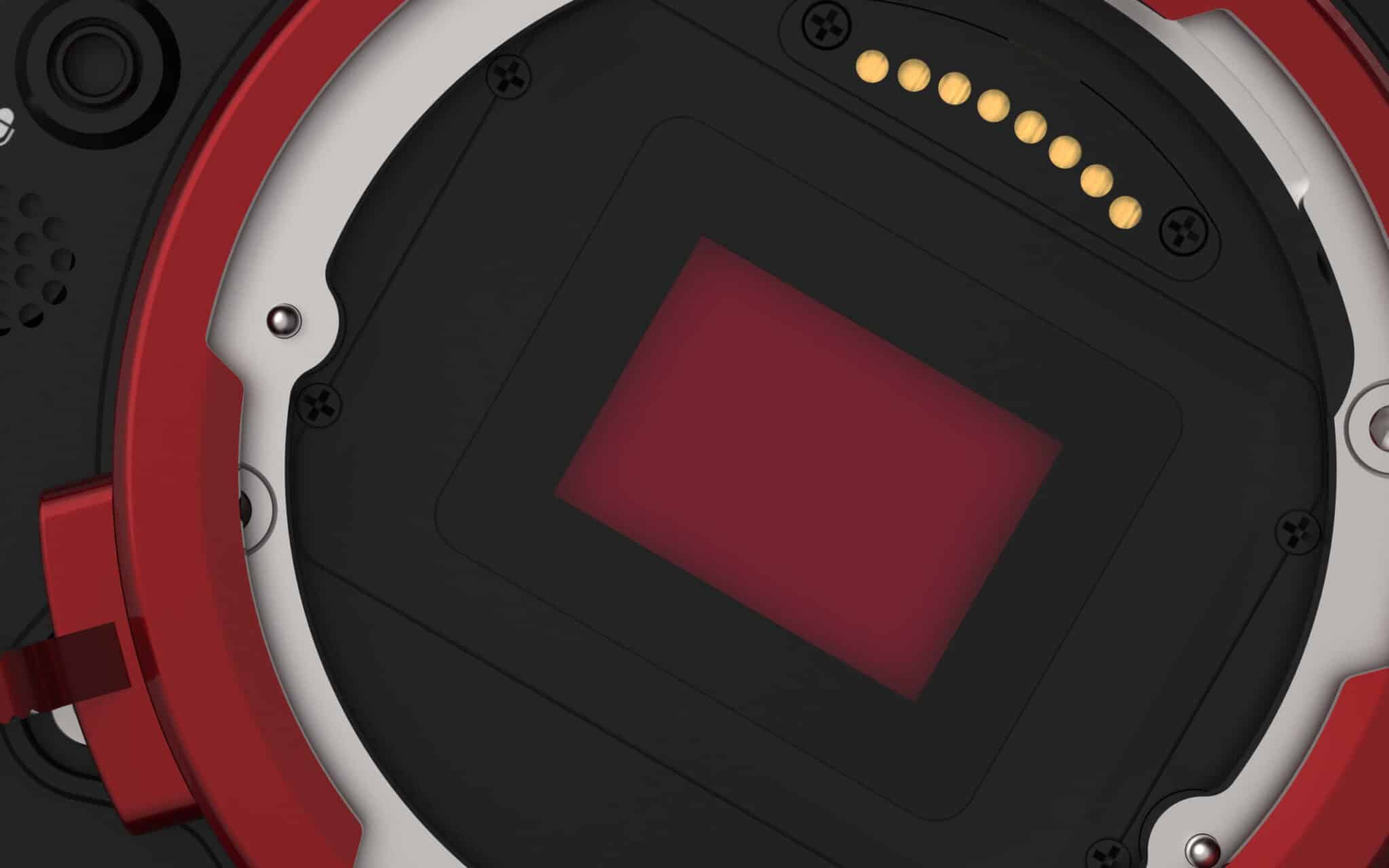
High Resolution for Smooth images
The Kinefinity MAVO mark 2 features a 6K sensor. For capturing artefact free and sharp images one requires a high resolution sensor or a thick OLPF filter. In the case of a thick OLPF like on Alexa classic, one is discounting on the resolving power of a sensor, because without a OLPF the camera will aliase. By making the pixels smaller, and thus adding more, an OLPF can be less strong. 6K is ideal because what we learned from science is that in the digital capture there is a nyquist limit, and in the case this is 0.7X. In order to reach the native resolution of a bayer sensor one needs to multiply by 0.7X, which is in the case of 6k close to a native resolution of 4K which is an industry standard. One can choose to oversample in-camera, or choose to shoot pixel to pixel, and oversample in post which can yield better effects, due to advanced noise reduction techniques and advanced oversample algorithms like catmul rom in Davincy Resolve. Kinefinity offers 4K oversampled recordings from the 6K stream for lower data rate, encoded in superior codecs like Prores444.
